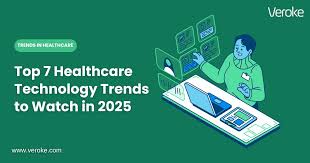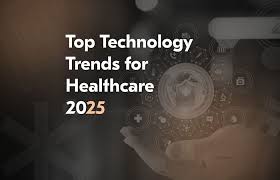Introduction
Imagine this: It’s 2025, and you’re at a family barbecue, flipping burgers like a pro, when your smartwatch buzzes. Not a text from your chatty aunt it’s a gentle nudge: “Hey, your heart rate’s spiking like it’s auditioning for a thriller movie. Time to chill or chat with a doc?” You laugh it off at first, but then you remember: this isn’t sci-fi; it’s the everyday magic of medical technology. Last year alone, the global med tech market reached a staggering $678.88 billion, growing at a 6% annual rate, according to industry reports. That’s more cash than most blockbusters dream of, all funneled into gadgets and gizmos that could save your bacon or at least your blood pressure.
Let’s go back to a less glamorous story, though. My grandmother used to swear by her “miracle” blood pressure cuff, which was essentially a prayer and a rubber bulb. These days, we’re ingesting tiny cameras that take us on a gut tour like extreme vacation vloggers or using artificial intelligence (AI) that can detect cancer more quickly than your perceptive mother can catch a lie. Not only is medical technology developing, but it’s also hosting a party where data dances and robots DJ. What’s the best part? From tech-savvy teenagers tracking their steps to grandparents surpassing them with virtual reality treatment sessions, it’s for everyone.
We’ll explore the fascinating realm of medical technology in this post, revealing trends that will make you laugh (such as when a robot surgeon “steals the show” from an anxious intern) and wonder (what if your genes held the key to dodging the family cold?). These innovations are democratizing health like never before, whether you’re a retiree planning your next adventure, a busy parent, or an inquisitive child. Hold on tight, as we examine how medical technology is changing the way people think about staying healthy by combining brains, data, and a little humor. Are you prepared to geek out? Come on, let’s roll.
What is Medical Technology?
Ever wondered if “medical technology” is just a fancy term for your doctor’s fancy gadgets? Spoiler: It’s way bigger—and sneakier—than that. At its core, medical technology encompasses all the tools, systems, and wizardry that bridge science and patient care. Think apps that predict your next sneeze or robots that stitch you up without spilling coffee.
A Quick Definition
Medical technology, or medtech for short, refers to any innovation that diagnoses, treats, or prevents illness using tech. From MRI machines humming like over-caffeinated bees to biotech pills that release drugs on demand, it’s the unsung hero of modern medicine. In 2025, with the market ballooning to nearly $700 billion, it’s clear: medtech isn’t optional; it’s the new normal. And hey, if it can make your annual checkup feel like a Netflix binge, who’s complaining?
Why It Matters Today
Why should you care about medical technology? Because it’s leveling the playing field. In a world where pandemics lurk like plot twists, these tools keep us one step ahead. For all age groups, from toddlers with smart thermometers to seniors with fall-detection wearables, medtech means fewer “oops” moments and more “aha!” triumphs. Plus, it’s saving lives statistically, innovations like AI diagnostics have slashed error rates by up to 30%. Not bad for a field that’s equal parts mad science and everyday magic.

Evolution of Medical Tech
Medical technology didn’t pop out of a lab fully formed like Athena from Zeus’s headache. Nope, it’s a bumpy road trip from leeches to lasers. Let’s trace the breadcrumbs, with a few detours for the funny bits.
From Stethoscopes to Smart Pills
Because it was uncomfortable to listen in on people’s chests, René Laennec created the stethoscope. We’re taking “smart pills” that send gut selfies to your phone in the modern era. Thanks to Moore’s Law and a healthy dose of human curiosity, medical technology has advanced from analog aches to digital cures. Do you recall 1958’s first pacemaker? It was the size of a suitcase, so imagine the pain of portability. Right now? They zap hearts back to rhythm without the drama, and they’re smaller than your smartphone.
Key Milestones in Health Tech
- 1970s: CT Scans – X-rays on steroids, revealing innards without the slice-and-dice.
- 1990s: Internet Meets Medicine – Early telemedicine trials, because who wants to drive in pajamas?
- 2010s: Wearable Boom – Fitbits counting steps like overzealous gym buddies.
- 2020s: AI Awakening – Algorithms outsmarting docs at pattern-spotting, with a 5.51% annual growth projected through 2030.
These leaps aren’t just tech flexes; they’re lifelines. For instance, robotic-assisted surgeries have exploded 15-fold since 2010, per industry stats. And let’s be real: If your surgeon’s hands shake less than a caffeinated squirrel’s, that’s a win.
For a deeper dive on early telemedicine experiments, check out our guide to virtual health pioneers.
Top Medical Technology Trends
2025 is serving up medical technology trends hotter than a viral TikTok dance. From AI playing doctor to wearables that nag you kindly, here’s the scoop on what’s buzzing—and why it’s got us all grinning.
AI Revolution in Diagnostics
Artificial intelligence in medical technology? It’s like giving Sherlock Holmes a supercomputer. AI scans X-rays for tumors faster than you can say “stat,” with accuracy rates hitting 94% in some studies. Imagine telling your doc, “The robot thinks it’s nothing—wanna double-check?” Humorous? Sure. Life-changing? Absolutely. In 2025, expect AI to crunch patient data for personalized predictions, cutting misdiagnoses by 20-30%.

Wearables Transforming Daily Life
Wearable health technology, which is more stylish than your favorite sneakers, has replaced cumbersome monitors. These days, Oura rings track sleep like a nosy butler, and Apple Watches can detect AFib with uncanny accuracy. These devices make health a game for people of all ages—adults avoid burnout alerts, children earn badges for staying hydrated. By the end of the year, the wearables market is expected to reach $225 billion in China alone. Expert advice: Pay attention to that “move more” vibe; it will make you feel guilty more than a passive-aggressive refrigerator note.
Dive into our review of top wearable health tech for families for hands-on picks.
Here’s a quick table of 2025’s hottest medical technology trends:
| Trend | Key Benefit | Projected Growth (2025) |
|---|---|---|
| AI Diagnostics | 94% accuracy in scans | 25% CAGR |
| Wearable Devices | Real-time vital monitoring | $50B global market |
| Robotic Surgery | 15x fewer complications | 12% annual rise |
| Telemedicine | 80% patient satisfaction | $175B worldwide |
| Precision Medicine | Tailored gene therapies | 15% expansion |
Robotic Surgery: Precision Meets Humor
Robotic surgery in medical technology? It’s the ultimate “hands-off” approach—literally. These mechanical marvels make incisions steadier than a yogi’s zen, but don’t worry; no Terminators here. Just tiny arms wielding scalpels like expert puppeteers.
How Robots Outdo Human Hands
Surgeons use joysticks to operate robots with da Vinci systems, which magnify views 10 times for incredibly precise control. Outcome? There are 15% fewer “oopsies” and shorter recovery times. Anticipate more intelligent bots with haptic feedback in 2025, which will allow documents to feel as though they are there. On a humorous note, early prototypes resembled octopus nightmares, but they are now stylishly saving lives.
Real-World Wins and Laughs
Take prostate surgeries: Robotic methods slash blood loss by 50%, per FDA data. Or pediatric cases, where tiny bots navigate kid-sized spaces without the shakes. One surgeon quipped, “My robot’s got better nerves than I do after three coffees.” For more on robotic innovations in everyday procedures, we’ve got the deets.
Telemedicine: Doctor Visits from Couch
Who hasn’t dreamed of ditching the waiting room for a Zoom call with Dr. Feelgood? Telemedicine, a cornerstone of digital health in medical technology, turned that fantasy real—especially post-2020. Now, in 2025, it’s as routine as your morning coffee.
The Rise of Virtual Care
Every year, 80 million visits are handled by telemedicine platforms such as Teladoc, with 80% satisfaction rates. For busy parents or those living in rural areas, it’s a blessing—consults in pajamas, anyone? Doctors can focus on the heavy lifting when AI chatbots prioritize symptom triage. Development? a market worth an estimated $175 billion, driven by 5G speeds that eliminate lag.
Pros, Cons, and Funny Fails
Pros: Convenience on steroids. Cons: Can’t hug your doc (yet). And the laughs? Remember that viral clip of a “virtual exam” gone wrong with a cat photobomb? Gold. But seriously, it bridges gaps for all ages, from teen mental health check-ins to elder med reviews. Curious about setup? Our telemedicine toolkit has you covered.
Read more: Top 10 Healthcare Technology Trends for 2025 – The Medical …
Precision Medicine: Tailored to You
Forget one-size-fits-all pills; precision medicine in medical technology is like bespoke suits for your DNA. It scans your genes to craft treatments that fit like a glove—revolutionizing care from cradle to golden years.
Genetics Driving Treatments
By analyzing biomarkers, docs predict responses—think cancer drugs that work 40% better for specific mutations. In 2025, CRISPR edits faulty genes like autocorrect for biology, with trials showing 70% efficacy in rare diseases. For kids with allergies or adults with heart risks, it’s predictive power at its finest.
Ethical Twists and Turns
The humor? “Your genes say you’re 20% pirate—explains the salt cravings!” But ethically, privacy’s key—who owns your genetic data? Regulations lag, but strides like EU’s GDPR help. Overall, precision medicine promises fewer side-effect surprises, making health personal and potent.
Future of Medical Technology
Peering into medical technology’s crystal ball? It’s dazzling: Nanobots zipping through veins, VR therapy for phobias, and quantum computing crunching cures overnight. But with great power comes… well, you know.
Biotech Breakthroughs Ahead
Expect biotech innovations like lab-grown organs by 2030, slashing transplant waits. AI will fuse with wearables for “health avatars” predicting crises weeks out. For all ages, this means proactive care—grandkids gaming to build bone density, boomers biohacking longevity. Market forecasts? Steady 5.51% growth, hitting $1 trillion by decade’s end.
Challenges We Can’t Ignore
Cybersecurity? Hackers eyeing your insulin pump is no joke. Equity? Not everyone’s got Wi-Fi for telemedicine. And costs—medtech’s pricey, though generics help. Humorously, if nanobots unionize, we’re doomed. Solutions? Inclusive policies and open-source tech. The future’s bright, but let’s not trip over the cords.
Read more: “Ultimate Guide to College of Medical Technology PIMS …
Summary
As we wrap up our exploration of medical technology, it is evident that these advancements are transforming healthcare from reactive to revolutionary, from AI that can detect sneezes before they occur to robots that remain motionless under stress. While maintaining accessibility for all age groups, we have marveled at precision adjustments, laughed at wearable annoyances, and taken a sneak peek at biotech’s future.
The momentum is unstoppable, as the medtech market is expected to reach $700 billion by 2025. It’s not flawless, though; ethics and equity require our attention. Medical technology is ultimately about enabling you to live bolder, laugh harder, and worry less—it’s not about gadgets. What do you think? Immerse yourself, maintain your curiosity, and never forget that the future of health is here and it’s hilariously human.
Read more: iPhone 17 Pro Max vs iPhone 16 Pro Max’s: Powerful Comparison
Frequently Asked Questions
What is the latest medical technology in 2025?
In 2025, standout medical technology includes AI-driven predictive diagnostics, which analyze data to forecast health issues with 94% accuracy, and advanced wearables like smart rings monitoring sleep and stress in real-time. Robotic surgery systems with haptic feedback are also booming, reducing recovery times by 20%. These tools make healthcare proactive and personalized for all ages.
How has medical technology changed healthcare?
Medical technology has shifted healthcare from hospital-centric to home-based, slashing wait times via telemedicine (now 80 million visits yearly) and cutting errors with AI scans. It’s boosted life expectancy by 5-10 years in developed nations through precision treatments, while wearables empower daily monitoring—turning patients into partners, not passengers.
What are examples of medical technology?
Prime examples include MRI machines for non-invasive imaging, insulin pumps for diabetes management, and CRISPR for gene editing. Don’t forget telemedicine apps for remote consults and robotic exoskeletons aiding mobility. These span diagnostics to rehab, making advanced care routine and remarkably effective across age groups.
What is the future of medical technology?
The future gleams with nanobots delivering targeted drugs, VR for phobia therapy, and quantum AI simulating drug trials overnight. By 2030, lab-grown organs could end transplant lists, with a $1T market. Challenges like data privacy loom, but inclusive innovations promise equitable health for everyone.
Is medical technology improving patient outcomes?
Absolutely—medical technology has improved outcomes dramatically, with robotic surgeries dropping complications by 15% and AI diagnostics boosting early detection by 30%. Telemedicine enhances access, reducing no-shows by 40%. For all ages, it’s fostering preventive care, longer lives, and fewer hospital stays overall.

